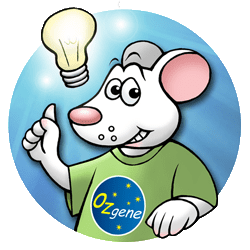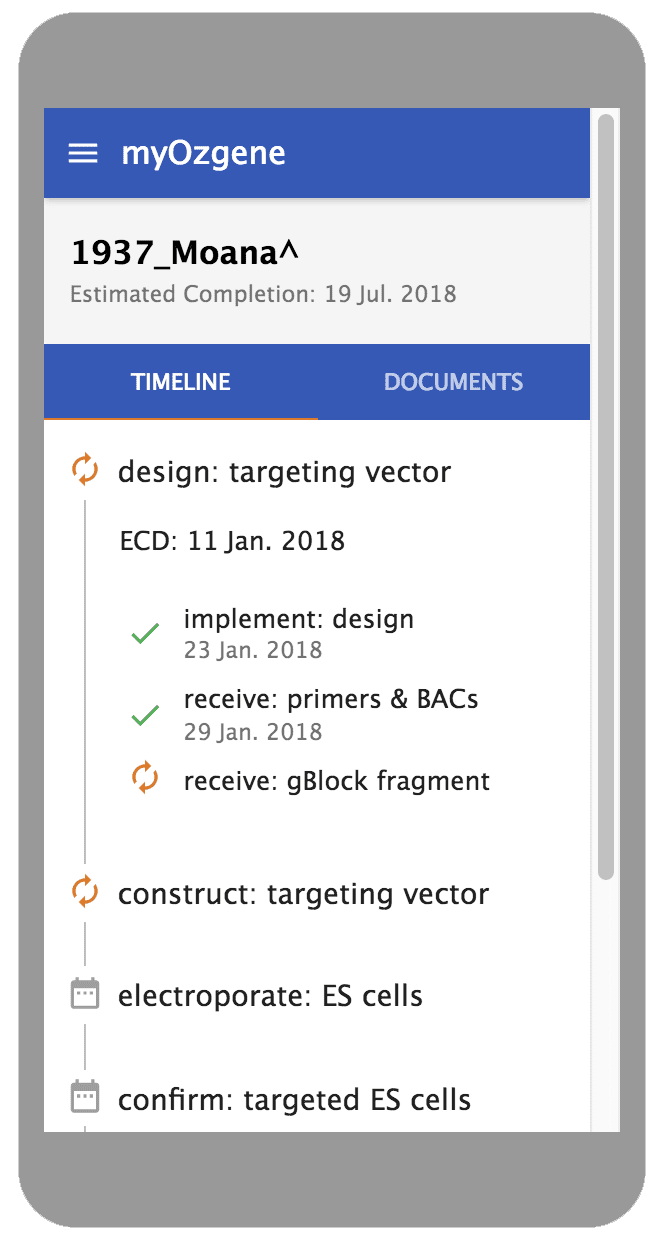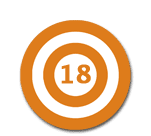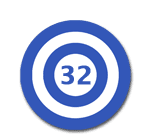Innate immunity insights
Innate immunity insights
In this issue
Feature
New myOzgene
Latest publications
Frank’s blog
Timeline update
 Innate immunity insights
Innate immunity insights
Our immune system consists of innate and adaptive subsystems working together. Innate immunity is our first defence against pathogens and refers to physical barriers such as skin, chemicals in the blood and immune system cells that recognise and respond to pathogens in a non-specific way. The complement system is an integral part of innate immunity. It comprises more than 50 plasma proteins and cellular receptors and plays important roles in immune sensing, bacterial opsonisation and lysis, as well as inflammation. Small cleavage fragments of C3 and C5, so-called anaphylatoxins (AT) C3a and C5a, are produced in response to complement activation and exert important innate and adaptive immune functions.
Prof. Dr. med. Jörg Köhl is the Director of the Institute for Systemic Inflammation Research (ISEF) at the University of Lübeck. His research focuses on the regulatory networks between the complement system and other parts of innate immunity in the context of autoimmunity, allergy and infections with intracellular pathogens. His laboratory also investigates the impact of these interactions on the development of adaptive immune responses.
Prof. Köhl’s specific focus are the ATs C3a and C5a along with their corresponding G-Protein-coupled receptors. This refers to C3a receptor (C3aR), C5a receptor 1 (C5aR1), C5aR2 (C5aR2) and the role they each play in allergic asthma, autoimmunity, and infections with intracellular pathogens. Recent data shows that AT receptors are part of the regulatory network of immune cell receptors. Examples include C5aR1-mediated suppression of Toll-like receptor-induced IL-12 family production from macrophages and C3aR-driven regulation of NLRP3 inflammasome activation in monocytes. In addition to the integral role of complement in the network of innate immune responses, the ATs and the activation of their cognate AT receptors control proliferation and differentiation of T cells in response to antigens.
In his two recent papers, both published in The Journal of Immunology, Prof. Köhl investigates the roles of C3aR and C5aR2 utilising two mouse models generated by Ozgene. Previous research existed on the roles of C3a/C3aR in the regulation of acute and chronic inflammatory diseases, however, little was known about C3aR expression and function in immune and stromal cells. A floxed C3aR reporter knock-in mouse was generated in collaboration with Ozgene and used by Prof. Köhl and his group to monitor C3aR expression. Strong expression of C3aR was found in the brain, lung, lamina propria, and visceral adipose tissue, whereas it was minor in the spleen, blood, bone marrow, and the airways. The biological significance of C5aR2 was also largely undefined until a floxed C5aR2 knock-in mouse was generated to track C5aR2 expression in tissue-residing and circulating immune cells. Prof. Köhl’s team found the strongest C5aR2 expression in the brain, bone marrow, and airways. Importantly, they observed C5aR2 expression in B lymphocytes and NK cells suggesting a novel functional role for C5aR2 in these cell populations.
Prof. Köhl’s publications provide novel insights into the expression pattern of C3aR in mice and a detailed map of murine C5aR2 immune cell expression in different tissues under steady-state conditions and upon pulmonary inflammation. The mouse models will help to reliably track and conditionally delete C3aR and C5aR2 expression in experimental models of inflammation.
For more information on Prof. Dr. med. Köhl’s research, read his publications below or in PubMed.
For information on Ozgene mouse models, visit Ozgene services.
New myOzgene
We have launched our new myOzgene, which is accessible on computers, tablets and smartphones. On myOzgene you can view your project documents and milestones along with an estimated timeline. myOzgene also displays and emails you real-time updates on completed and failed project processes.
The new myOzgene replaces the previous web portal and myOzgene iPhone app. Passwords have been reset to the original password provided by Ozgene. Unfortunately at this time you are unable to change your password. We will inform you as soon as this feature has been updated.
Please contact us if you need any assistance logging into myOzgene or if you have any feedback.
Latest publications
FEATURED – J Immunol. 2017 Nov 1.
Monitoring C5aR2 Expression Using a Floxed tdTomato-C5aR2 Knock-In Mouse. Karsten CM, Wiese AV, Mey F, Figge J, Woodruff TM, Reuter T, Scurtu O, Kordowski A, Almeida LN, Briukhovetska D, Quell KM, Sun J, Ender F, Schmudde I, Vollbrandt T, Laumonnier Y, Köhl J. – Germany, Australia, USA. [read]
FEATURED – J Immunol. 2017 Jul 15.
Monitoring C3aR Expression Using a Floxed tdTomato-C3aR Reporter Knock-in Mouse. Quell KM, Karsten CM, Kordowski A, Almeida LN, Briukhovetska D, Wiese AV, Sun J, Ender F, Antoniou K, Schröder T, Schmudde I, Berger JL, König P, Vollbrandt T, Laumonnier Y, Köhl J. – Germany, USA. [read]
Free Radic Biol Med. 2018 Feb 1.
Absence of the biliverdin reductase-a gene is associated with increased endogenous oxidativestress. Chen W, Maghzal GJ, Ayer A, Suarna C, Dunn LL, Stocker R. – Australia. [read]
Mol Cell Biol. 2018 Jan 29.
A Knock-In Tristetraprolin (TTP) Zinc Finger Point Mutation in Mice: Comparison with Complete TTP Deficiency. Lai WS, Stumpo DJ, Qiu L, Faccio R, Blackshear PJ. – USA. [read]
Oncogene. 2018 Jan 25.
The tumor suppressor Hic1 maintains chromosomal stability independent of Tp53. Szczepny A, Carey K, McKenzie L, Jayasekara WSN, Rossello F, Gonzalez-Rajal A, McCaw AS, Popovski D, Wang D, Sadler AJ, Mahar A, Russell PA, Wright G, McCloy RA, Garama DJ, Gough DJ, Baylin SB, Burgess A, Cain JE, Watkins DN. – Australia, USA. [read]
Sci Rep. 2018 Jan 23.
Abnormal behaviours relevant to neurodevelopmental disorders in Kirrel3-knockout mice. Hisaoka T, Komori T, Kitamura T, Morikawa Y. – Japan. [read]
Development. 2018 Jan 22.
Podoplanin regulates mammary stem cell function and tumorigenesis by potentiatingWnt/β-catenin signaling. Bresson L, Faraldo MM, Di-Cicco A, Quintanilla M, Glukhova MA, Deugnier MA. – France, Spain. [read]
J Immunol. 2018 Jan 15.
Cleavage of TL1A Differentially Regulates Its Effects on Innate and Adaptive ImmuneCells. Ferdinand JR, Richard AC, Meylan F, Al-Shamkhani A, Siegel RM. – USA, UK. [read]

It shouldn’t be this hard
Shingo blog by Ken Snyder
Frank’s blog – Are you struggling with Lean implementation? I’d like to share a blog by Ken Snyder that may be of help. For more Lean insights, join us at the Shingo Conference in Florida in April. Click on the banner above to find out more.





